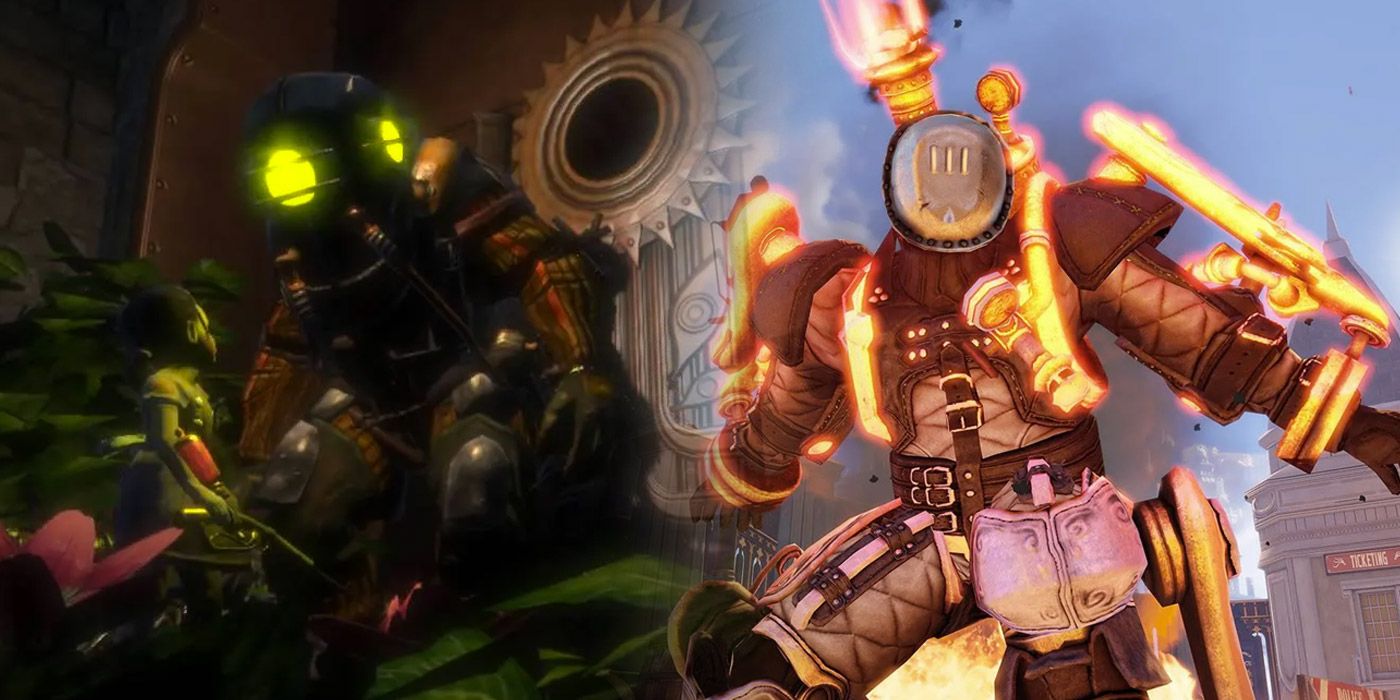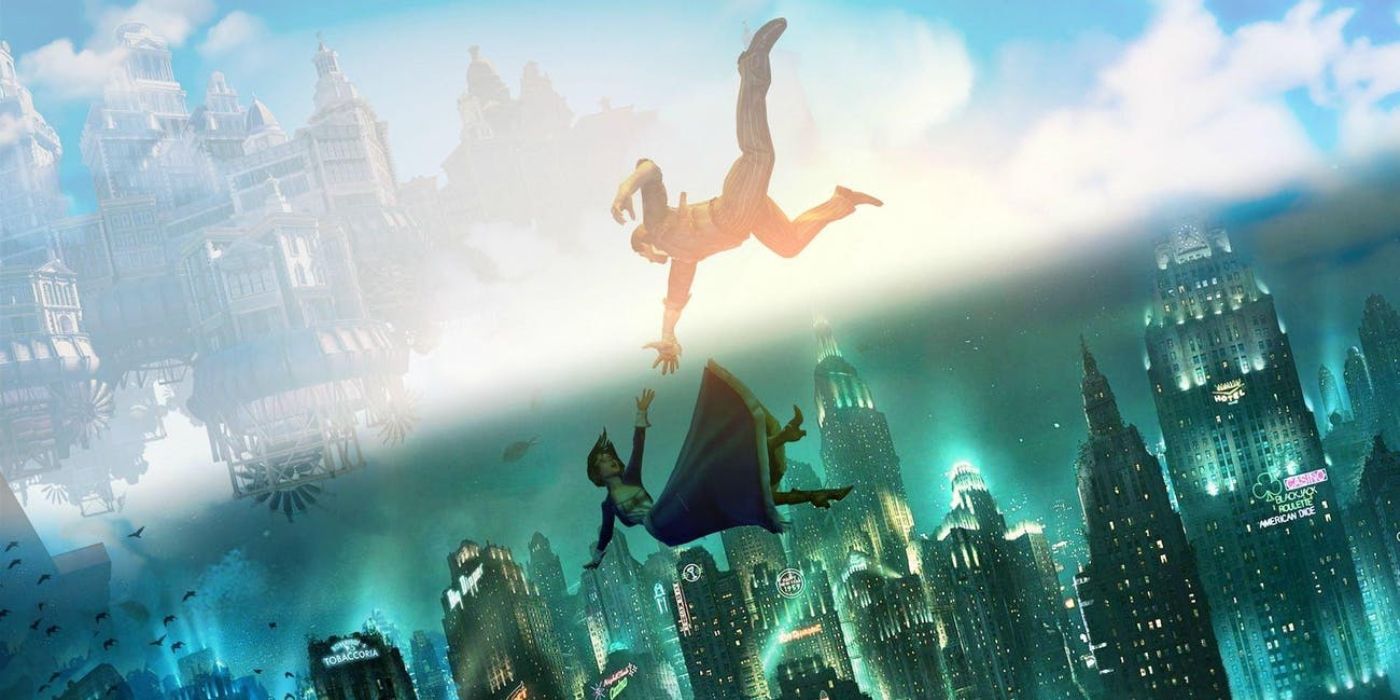BioShock 4 is in development (or whatever it is called), and will have a big challenge ahead if it’s going to live up to the original or the acclaimed sequel, BioShock Infinite. When its comes to its main influences, however, the game should prioritize one of the previous installments over the other.
BioShock 4 needs to be more like the original BioShock than it is BioShock Infinite. This includes the variety of abilities, the variety of enemies, and the way the setting is designed. Though Infinite was a great game, particularly its story, there are a few ways the original trumps it that BioShock 4 should learn from.
Combat and Abilities
Combat has never been the strong suit of the BioShock games. The original BioShock, however, had more diverse abilities which allowed for different playstyles and less repetitive combat. The first BioShock game had 11 Plasmids, all of which gave the player different abilities, including some which point to other mechanics cut from Infinite. Security Bullseye, for example, was a Plasmid in the first BioShock which turned all of the security devices in an area to attack a target, allowing for a more stealth-driven and sabotage-style run-through compared to Infinite's Possession mechanic.
While BioShock Infinite introduced other new mechanics like the sky-lines, it reduced the amount of abilities–renamed Vigors in Infinite to match the early 1900s World Fair aesthetic–to just eight abilities, most of which had parallels in the original Plasmids. BioShock Infinite Vigor Murder of Crows, for example, summoned a swarm of crows to attack enemies. This was similar to Insect Swarm, which unsurprisingly set a swarm of bees on a nearby enemy, with the added effect of distracting them.
Overall, BioShock Infinite’s combat was more repetitive and more less diverse in terms of available playstyles, forcing most players to go for a run-and-gun type of play. BioShock 4 should try and allow for a greater diversity of playstyles and should try and add more abilities with a greater diversity of effects.
Enemies and Setting
BioShock's Rapture is a beloved video game setting, and some fans might consider it almost unfair to place Columbia in comparison. However, Columbia lacked a few aspects that Rapture didn’t. Since the original BioShock already took place after disaster had struck, Rapture’s abandoned hallways ironically felt more lived-in. Players were always able to find evidence of abandoned parties, as well as the Splicers who roamed the sunken city.
Because BioShock Infinite's Columbia is supposed to still be fully inhabited at the time of BioShock Infinite, the city feels strangely empty for most of the game. While Rapture always had the ability to imply that it was far larger than it appeared in game, Columbia’s position in the sky always seemed to reveal the city’s relatively small size as well.
The average enemy in BioShock Infinite is simply a normal person, and the people of Columbia feel far less integrated into the setting than BioShock’s Splicers, Big Daddies, and Little Sisters. More unique enemies like the Order of the Raven and the Handy-Men were interesting but didn’t seem to feed into the game’s central themes in the same way as the original BioShock enemies.
BioShock has a big challenge feeling like a continuation of the series without becoming repetitive, especially when it comes to the game’s setting. However, it’s been over seven years since the last game released, and with 2K creating a new studio, Cloud Chamber, to develop the game, the franchise could go in almost any direction.
BioShock 4 is in development.



